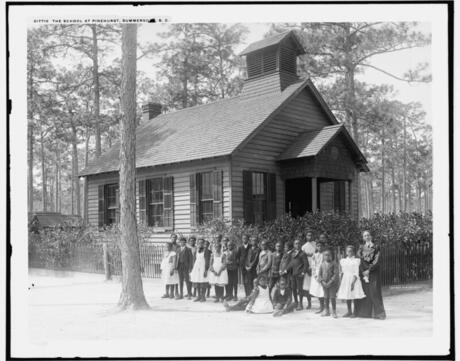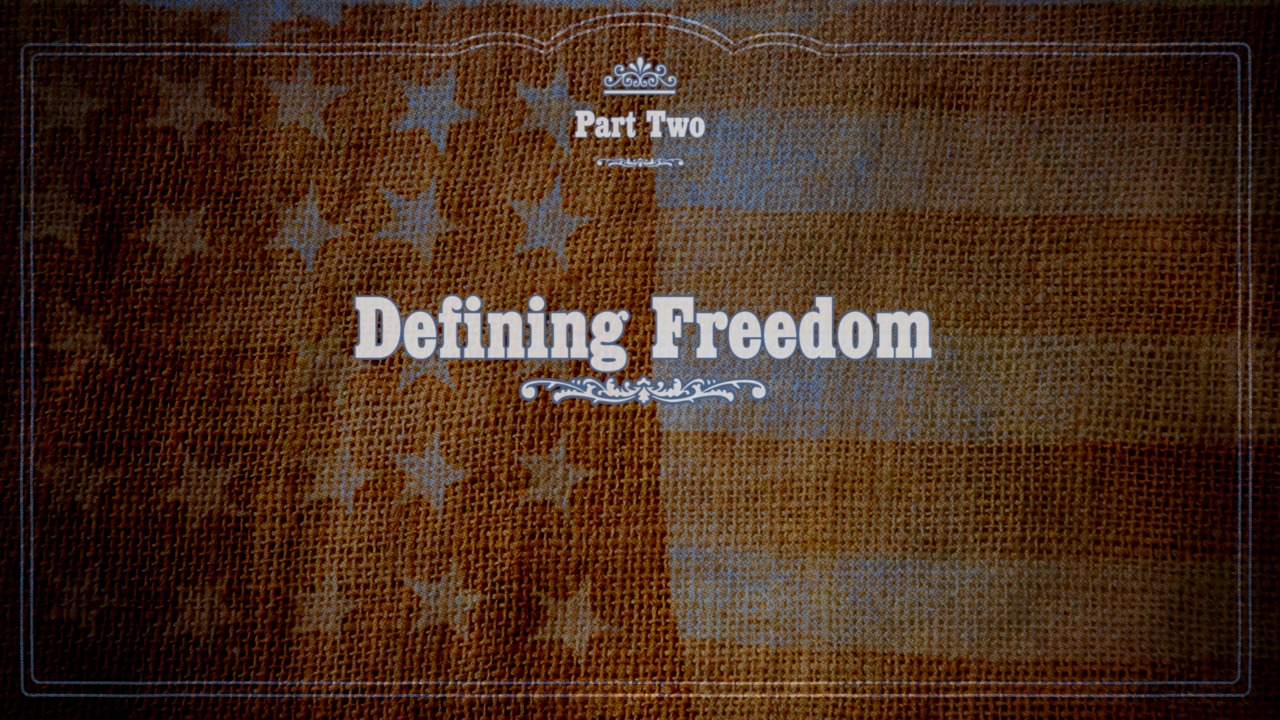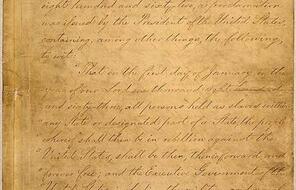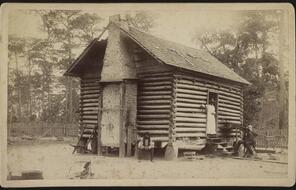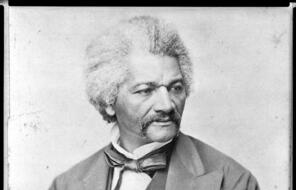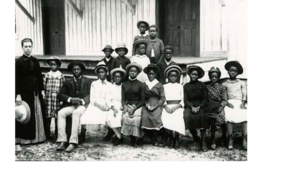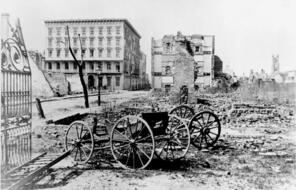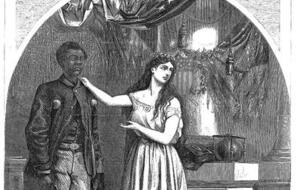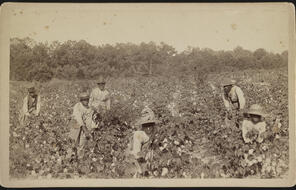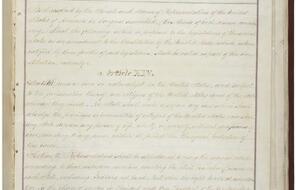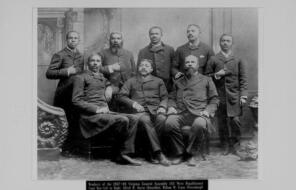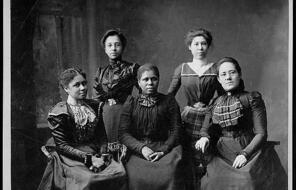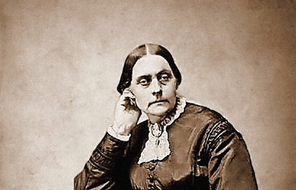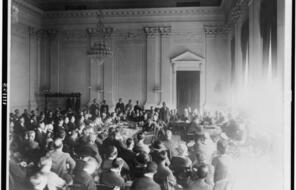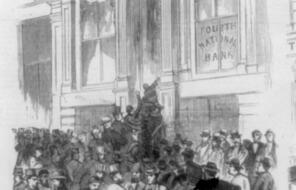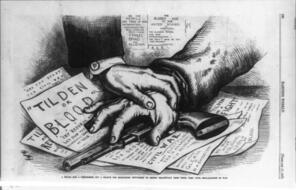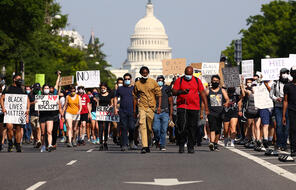While the Civil War and Thirteenth Amendment ended the enslavement of 4 million people in the United States, they did not determine what would replace it. As historian Leon Litwack explains, the question on the minds of many Americans regarding the status of formerly enslaved people was, “How free is free?” While news of Emancipation caused celebration among millions of formerly enslaved Americans and their supporters, the lack of definition of their freedom tempered some of the jubilation with realism about American society. George G. King, born into slavery in South Carolina, reflected on this reality when he learned that he was no longer enslaved: “The Master he says we are all free . . . but it don’t mean we is white. And it don’t mean we is equal.”
In this lesson, students will learn about the variety of ways that Black Americans sought to define freedom in their lives immediately after Emancipation. In particular, they will examine how such Americans attempted to give meaning to freedom through (1) the ways in which they thought about themselves and their lives, (2) the actions and choices they made in their day-to-day lives immediately after Emancipation, and (3) their longer-term political, economic, and social aspirations to be full and equal members of American society.
For many freedpeople, Emancipation brought immediate and drastic changes to their lives, while for others day-to-day life remained largely the same. Regardless, according to Litwack’s analysis, nearly all freedpeople experienced a profound change in how they thought about themselves and their lives: “Nearly all of them could subscribe to the underlying principle that emancipation had enabled them to become their own Masters.”
Four million Americans were no longer the property of another person, subject to another’s will. Even when freedpeople chose to stay and work on the plantations where they had been enslaved, at that point in time it was often their choice.
This shift in the way that freedpeople thought about their identities empowered them with a new sense of agency and possibility. They now perceived choices in their lives that they did not have before, even if some of the choices would once again be taken away in the months and years to come. These choices inspired many to begin to test their freedom. To know how it felt to be free, Litwack explains, “demanded that the ex-slave begin to act like a free man, that he test his freedom, that he make some kind of exploratory move, that he prove to himself (as well as to others) by some concrete act that he was truly free.”
Such concrete actions that freedpeople took to define their freedom and demonstrate control over their own lives included:
- leaving the plantation
- negotiating wages and work conditions
- changing employers
- reuniting families split apart when some were sold away under slavery
- getting married
- changing their names
- learning to read
- establishing churches
- claiming land as their own
These day-to-day choices of freedpeople were met with opposition by some white Americans and support by others. According to Litwack, “To those accustomed to absolute control, even the smallest exercise of personal freedom by a former slave, no matter how innocently intended, could have an unsettling effect.”
Throughout the Reconstruction era and for many decades after, white supremacists attempted through laws, intimidation, and violence to reestablish control over the Black laboring class in the South, reasserting severe restrictions on their ability to exercise many of the types of choices listed above. The resistance of many white Americans to the way freedpeople and their allies defined freedom will be explored in several lessons later in this unit.
Yet, in this unsettled environment, other Americans supported many of the ways in which ex-slaves sought to define their freedom. Perhaps no greater effort was made in support of freedpeople than that of the Freedmen’s Bureau. In The Souls of Black Folk, W. E. B. Du Bois called the Freedmen’s Bureau “one of the most singular and interesting of the attempts made by a great nation to grapple with vast problems of race and social condition.”
Created by Congress in March 1865, the Bureau of Refugees, Freedmen, and Abandoned Lands represented the first significant post-war attempt by the federal government to define freedom for Black Americans. Involved in the daily local affairs of communities across the South, the bureau represented a significant expansion of the reach of the federal government. The Freedmen’s Bureau’s most immediate job was to provide government aid to penniless freedpeople and destitute refugees from the war. The bureau also oversaw land abandoned and confiscated during the war, the status of which would prove to be a particularly contentious issue. In addition, the bureau’s mission included helping Black Americans transition from slavery to freedom by educating them about their new rights and responsibilities.
One of those responsibilities, according to the bureau, was to resume working in the Southern fields as quickly as possible, but now as wage laborers instead of slaves. The resumption of labor, according to assistant bureau commissioner Rufus Saxton, would disprove their former masters’ arguments that African Americans were lazy and worked only when under threat of the lash.
By quickly returning to the fields, the freedpeople would also help the post-war national economy get back on its feet. To that end, the bureau agents played an essential role by helping to negotiate labor contracts between former slaves and planters and resolving disputes by acting as a court of law in areas where the local courts did not recognize Black citizens. The Freedmen’s Bureau also played an important role in reconstructing the post-war South through its work in education. The schools that the bureau created to educate the freedpeople, augmenting schools created by Northern missionaries and the freedpeople themselves, constituted the first public school systems the region had ever seen and established a legacy of public education enjoyed by all children in the South.
Beyond the freedom to be “their own masters” in matters of work, family, and church, African Americans expressed even more robust political, economic, and social aspirations for their lives as free people. In this lesson, students will explore four documents in which Black Americans define what they believe they need in order to be both free and equal members of American society. To Garrison Frazier, a minister and leader of the Savannah, Georgia, community of freedpeople, the bases of freedom and equality for Black Americans were economic rights, including land of their own, and the ability to live apart from the prejudice of white Americans.
In addition to land, the formerly enslaved believed that a key aspect of their new freedom was their entitlement to fair wages in exchange for their labor. Students will explore an 1866 petition circulated by Black women laundry workers in Jackson, Mississippi, in which the workers join forces to set a uniform pay rate for their labor. Another important aspect of freedom was securing voting rights and civil equality for freedpeople. In a speech entitled “What the Black Man Wants,” Frederick Douglass demanded that government action secure these rights for freedpeople, asserting that Black Americans should be placed on the footing where they could exist on their own without further outside assistance.
To Jourdon Anderson, a former slave writing in response to his former master’s request that he return to work on the plantation, to be free and equal meant safety for his family, education for his children, and compensation for the labor his family performed as slaves. Yet, as students will see when they examine his letter in the next lesson, Anderson’s sarcastic tone indicated that he also believed that freedom provided him the dignity to be able to address his former master as his equal in social status.
Finally, a convention of freedmen in Charleston, South Carolina, demanded education for their children, arguing that “an educated and intelligent people can neither be held in, nor reduced to slavery.”
By exploring these four documents, students will begin their reflection on key issues at the core of the debates and struggles of the Reconstruction era—voting rights, land distribution, and education, but also dignity, safety, and the nature of equality.
